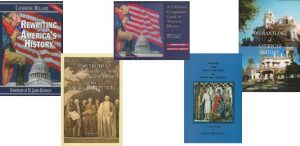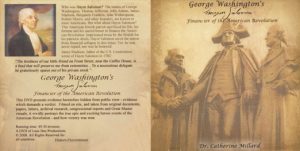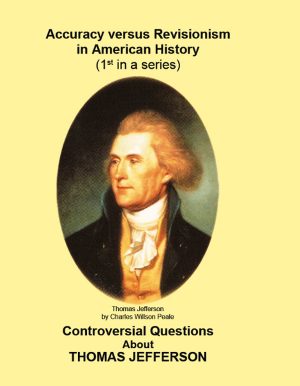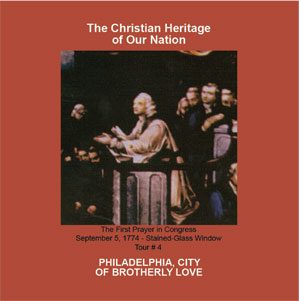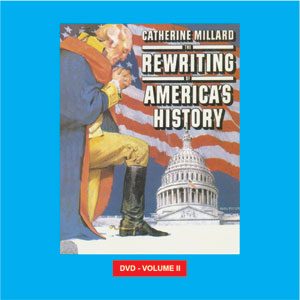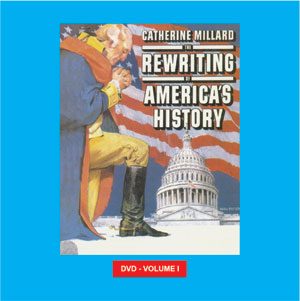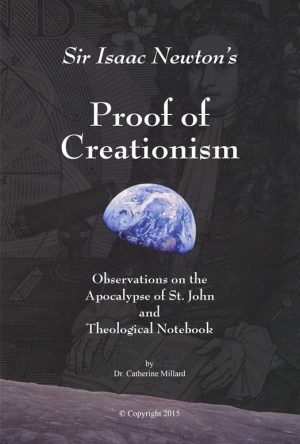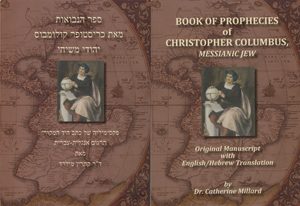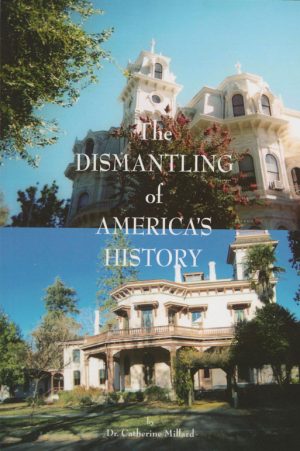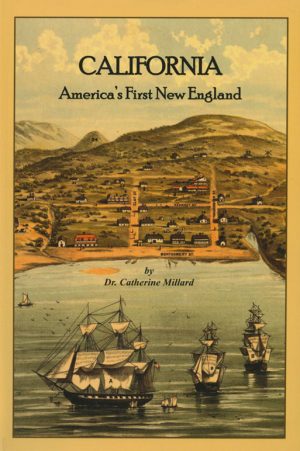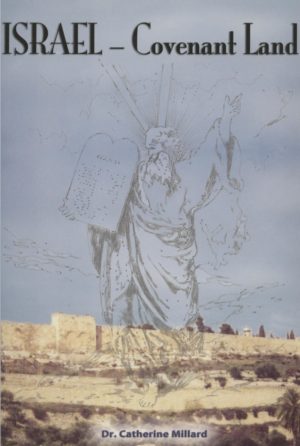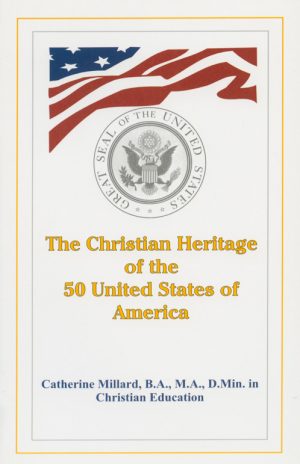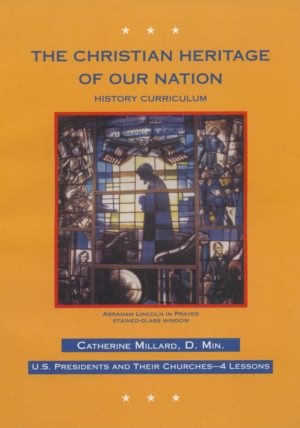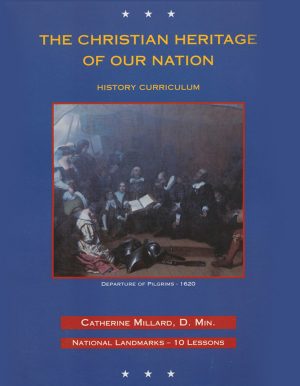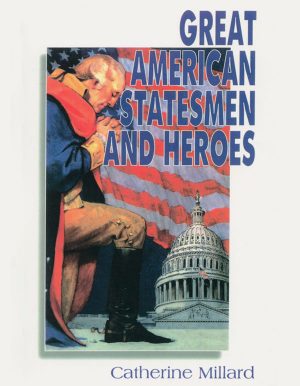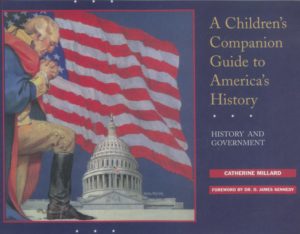The Declaration of Independence, the Constitution, and the Bill of Rights form the foundational documents of this nation. These three original, signed documents are housed within the National Archives, an agency of the Executive Branch of government. The two historical figures most closely associated with these writings are Thomas Jefferson, author of the Declaration of Independence; and George Washington, first President of the United States.
Construction for the National Archives building, designed by architect John Russell Pope, began in 1932, and was completed in 1937. Two 38-foot, 7-inch tall bronze doors, each weighing 6.5 tons, slide into the walls.
A large, circular, bronze design is embossed in the marble floor of the inner entrance way to the Rotunda. It symbolizes the purpose and function for the National Archives. The four allegorical, winged figures represent Legislation, Justice, History and War and Defense – indicative of the documents housed within this structure. Interestingly enough, God’s magnificent Ten Commandments stand out in prominence with the Senate and Justice to the right, portraying America’s legislative and judicial systems of government, and showing forth from whence the nation’s power is derived.
The Rotunda, or Great Hall, houses three items of great value. These are the original, handwritten parchments upon which the American Republic is based: The Declaration of Independence, the Constitution, and the Bill of Rights. They were placed in helium-filled bronze and glass display cases on December 15, 1952 upon their removal from thermostated, mahogany and glass display cabinets in the historic Thomas Jefferson building of the Library of Congress, where they had been on display since 1921. The Declaration of Independence was perfectly legible upon its removal (see 1950 photograph).
The Declaration of Independence
The Declaration of Independence is the forerunner to the U.S. Constitution. Composed by Thomas Jefferson, it begins with an acknowledgment that man’s freedom and equality was bestowed upon him by Almighty God.
…We hold these truths to be self-evident, that all men are created equal, that they are endowed by their Creator with certain unalienable rights, that among these are life, liberty, and the pursuit of happiness. That to secure these rights, governments are instituted among men, deriving their just powers from the consent of the governed. That whenever any form of government becomes destructive of these ends, it is the right of the people to alter or to abolish it, and to institute new government, laying its foundation on such principles, and organizing its powers in such form as to them shall seem most likely to effect their safety and happiness…
A compilation of 27 grievances against the current power are then cited, after which a final conclusion is drawn:
We, therefore, the Representatives of the United States of America, in General Congress assembled, appealing to the Supreme Judge of the world for the rectitude of our intentions, do, in the name, and by authority of the good people of these Colonies, solemnly publish and declare, That these United Colonies are, and of right ought to be, Free and Independent states;…And for the support of this declaration, with a firm reliance on the protection of Divine Providence, we mutually pledge to each other our lives, our fortunes, and our sacred honor.
Signed by order and in behalf of Congress,
John Hancock, President
July 4th, 1776.
The “Frequently Asked Questions” section of the National Archives’ 2011 Visitor’s Guide states,
Why is the Declaration of Independence so faded?
Answer: “This parchment has been proudly displayed over many decades, including 10 years of exposure to sunlight opposite a window in the Patent Office Building. Today, it is sealed in the most scientifically advanced housing that preservation technology can provide.”
Accuracy vs. Revisionism
However, the Library of Congress’ official documentation states that the Declaration of Independence was displayed in the Patent Office from 1841-1876, giving a detailed account of the Declaration’s whereabouts from 1776 to December 13, 1952, when it was transferred to the National Archives. A photograph taken in 1967 of the Declaration of Independence shows that it was then perfectly legible.
The engrossed Declaration of Independence (on parchment)* was assured by a resolution of the Continental Congress dated July 19, 1776. This resolution provided that the text be written on parchment to which ‘every Member of Congress’ should affix his signature. Most of the members signed on the 2nd of August, and the document became one of the official papers of Congress entrusted to its secretary, Charles Thomson…In 1789, with the National Government functioning under the Constitution, Charles Thomson relinquished his commission and the priceless papers in his charge. They were transferred to the Department of State, and the following year were taken once more to Philadelphia, the temporary capital. In 1800 they were transported to the new and permanent seat of Government, the federal city of Washington.
When British troops threatened the capital in the War of 1812, the Declaration of Independence and Constitution were concealed in an idle grist mill on the Virginia side of the Potomac. Thence they were carried to Leesburg, Virginia, where they remained until the period of danger was over. The Declaration of Independence was displayed in the Patent Office from 1841 to 1876, at the Centennial Exhibition in Philadelphia in 1876 and 1877, and in the State, War and Navy Building in Washington from 1877 to 1894.
On September 30, 1921, the two treasured documents were transferred to the Library of Congress (under the general authorization of the act of Congress of February 25, 1903). Formalities were observed in the Department of State, and the Honorable Charles Evans Hughes, Secretary of State, delivered the papers to Dr. Herbert Putnam, Librarian of Congress. On February 28, 1924, they were placed in the Shrine which has since sheltered them (see 1950 photograph). The installation was solemnly effected in the presence of the President of the United States, the Secretary of State and a representative group from Congress. The Library of Congress reported: “The impression upon the audience proved the emotional potency of documents animate with a great tradition.”
During World War II – from December 26, 1941, to October 1, 1944 – prudence dictated their removal from the Shrine to Fort Knox, Kentucky.
Removal to the National Archives
On December 13, 1952, the Declaration of Independence and Constitution were transferred from the Library of Congress shrine (Main Vestibule of the Thomas Jefferson Building) to the National Archives. The Declaration of Independence was placed in a helium-filled display cabinet.”
Helium is a gas which yellows and fades parchment. Hence its appearance today is faded and illegible. All the signatures have disappeared. A photograph of the original Declaration of Independence, taken in the National Archives (see 1967 photograph) shows that both its text and fifty-six signatures were legible at that time.
Since its inception in 1984, Christian Heritage Tours, Inc. has watched the rapid disintegration and fading of the original Declaration of Independence. The signatures are no longer decipherable – its text illegible. Only the heading is now readable for the millions of history-loving Americans viewing their Charters of Freedom annually. In stark contrast, both the signatures and text of the Constitution and Bill of Rights are legible. Only one original Declaration of Independence exists. No other nation possesses such a priceless document, which boldly declares that God created each American equal, endowing each individual with certain inalienable rights, among which are Life, Liberty and the Pursuit of Happiness…and supporting its affirmation with a firm reliance upon the protection of Divine Providence (Almighty God); the fifty-six signers pledging to each other their lives, their fortunes and their sacred honor.
What a tragedy to have witnessed this foremost document of America’s history targeted – fading into oblivion while housed at the National Archives in the nation’s capital.
To learn more, click here. (Rewriting book)
___________________________
Bibliography:
Official Documentation. Library of Congress, Rare Manuscript Division, Washington, D.C.
